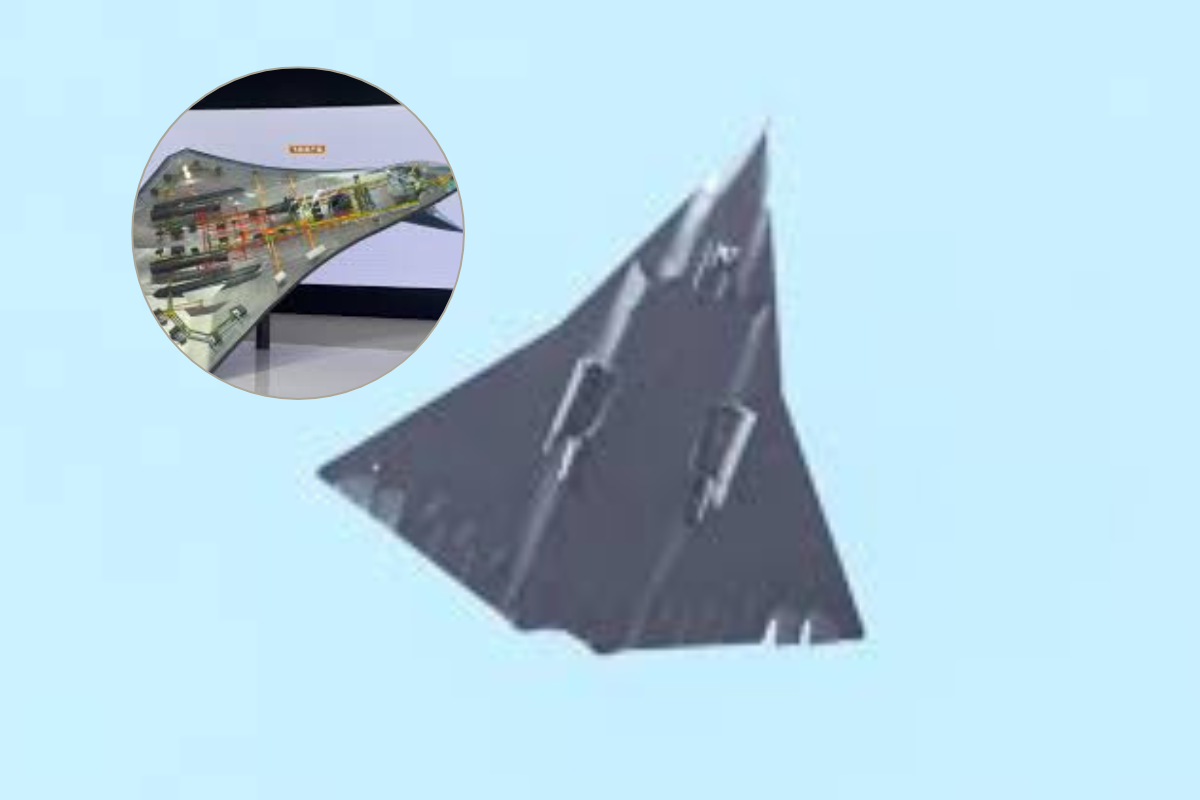China has made a significant breakthrough in military aviation by successfully flying its next-generation 6th-generation fighter jet. This event has captured the attention of military experts and aviation enthusiasts around the world. It shows how fast China is moving toward becoming a leader in advanced air combat technology. Let’s explore this remarkable achievement in detail.
The Historic First Flight
China 6th generation fighter jet took its first flight in late 2024. This was a major moment in military aviation history. The test was carried out by the Aviation Industry Corporation of China (AVIC), a state-owned company responsible for designing and building this advanced aircraft.
During the flight, the fighter jet was followed by a J-20 fighter acting as a support plane. The flight was recorded and shared in a video that went viral. People around the world watched in amazement as this new jet performed its maiden flight successfully.
The purpose of this flight was to test how well the plane performed in real conditions. It also highlighted China’s ability to create cutting-edge technology for its military. This first flight is a step toward making the China 6th generation fighter jet fully operational.
What is a 6th Generation Fighter Jet?
A sixth-generation fighter jet is an advanced combat aircraft designed to be more powerful and capable than the fifth-generation jets, such as the F-35 from the United States or China’s J-20. These jets are built with the future of warfare in mind and are designed to perform a variety of tasks that older planes cannot.
Some key features of 6th generation fighter jets include:
- Extreme Stealth: These jets are harder to detect on radar.
- Artificial Intelligence (AI): AI helps pilots make better and faster decisions.
- Advanced Communication: The jets can connect with drones and other systems to work as a team.
- Next-Level Weapons: These jets may use laser weapons or other advanced systems.
China’s 6th generation fighter jet appears to have many of these features, making it a step ahead in modern combat aircraft design.
Unique Features of China 6th Generation Fighter Jet
The design of the Chinese 6th generation fighter jet has surprised many people. It looks very different from traditional fighter jets, especially because it has no tail. This tailless design gives the jet a unique appearance and provides several advantages:
- Better Stealth: Without a tail, the jet is harder to detect by radar systems, making it almost invisible in combat.
- Improved Aerodynamics: The smooth and tailless design helps the jet fly faster and more efficiently.
- Stronger Build: The jet is likely made with special materials that are both lightweight and durable, which improves its overall performance.
This design reflects global trends in aviation. Countries like the United States and those in Europe are also working on similar concepts, showing that this approach is key to future air combat.
Technological Innovations in the Jet
China 6th generation fighter jet is expected to include some of the most advanced technologies in aviation. These technologies make it stand out from older planes. Here are some of the features experts believe it might have:
- Artificial Intelligence: AI can assist pilots during missions, helping them focus on critical tasks. In some cases, the plane might even fly itself.
- Hypersonic Speeds: The jet could fly faster than Mach 5, making it one of the fastest aircraft in the world.
- Advanced Engines: These engines allow the jet to fly at supersonic speeds for long periods without using extra fuel.
- Working with Drones: The plane might act as a command center for drones, directing them during missions for extra support.
- New Weapons Systems: The jet could be equipped with laser weapons or other advanced systems that are not yet available on older aircraft.
These features show that the China 6th generation fighter jet is designed to dominate the skies and stay ahead of its competitors.
How China is Competing Globally
The successful flight of the China 6th generation fighter jet shows that China is now a key player in the global race to develop advanced fighter jets. Other countries, such as the United States and European nations, are also working on their 6th generation jets. For example:
- The United States is working on the NGAD (Next Generation Air Dominance) initiative.
- Europe is working on the FCAS (Future Combat Air System).
These projects aim to build jets with similar capabilities, but China’s rapid progress is attracting the attention of other nations. Some experts believe this could change how countries prepare for future wars.
What This Means for the World
The development of the China 6th generation fighter jet could have big impacts on global security and power dynamics. Here are some potential effects:
- Strength in Asia: China could use this jet to strengthen its position in areas like the South China Sea.
- Deterrence: The advanced jet might make other countries think twice before challenging China in the air.
- International Sales: In the future, China might sell these jets to friendly nations, which could spread its influence globally.
This progress shows that China is serious about competing with the world’s top military powers. The China 6th generation fighter jet could become a symbol of its growing strength.
Challenges Ahead
Building and testing a fighter jet is just the first step. There are still many challenges before the China 6th generation fighter jet can be fully ready for combat:
- More Testing Needed: The jet will need to be tested in different conditions to ensure it works perfectly.
- Mass Production: Making enough of these jets to meet military needs can be costly and complicated.
- Adding Advanced Technology: AI, drones, and other systems must work smoothly with the jet.
- High Costs: Developing and building such advanced planes requires a lot of money and resources.
These challenges are not unique to China. Every country working on 6th generation jets faces similar issues.
What Experts Are Saying
Military experts have mixed reactions to the China 6th generation fighter jet. Some are impressed by how quickly China has developed such advanced technology. Others point out that it will take years to make the jet fully operational.
From my experience studying aviation, I believe this first flight is a big step forward. It shows how far China has come in a short time, and it will encourage other countries to speed up their projects to stay competitive.
Future Plans for the Jet
China is not stopping here. After the first flight, there are many more steps to take before the China 6th generation fighter jet becomes part of its military. These include:
- More Flights: The jet will undergo more tests to improve its design and performance.
- Combat Readiness: Engineers and pilots will work together to make the jet ready for real missions.
- International Impact: China’s progress could change how other countries build and use fighter jets.
Each step will bring the jet closer to becoming a fully functional part of China’s air force.
The Growing Role of AI and Automation
One of the most exciting parts of the China 6th generation fighter jet is its potential use of artificial intelligence. AI can play a big role in making these jets more effective. For example:
- Autonomous Flying: The jet might be able to fly and complete missions without a pilot.
- Decision Support: AI could help pilots make better choices during combat.
- Better Communication: AI systems can help the jet coordinate with other planes and drones.
AI is becoming a key feature in modern warfare, and the China 6th generation fighter jet shows how important this technology will be in the future.
How This Could Change Air Combat
The China 6th generation fighter jet is not just a new plane—it represents a shift in how air combat might work in the future. These jets are designed to be part of a networked system, working together with other aircraft, drones, and even satellites. This means:
- Faster Reactions: The jet can respond to threats more quickly.
- More Precision: Advanced weapons can hit targets with greater accuracy.
- Better Teamwork: The jet can share information with other systems, creating a stronger defense.
This new way of fighting could make older planes less effective, forcing countries to upgrade their air forces.



